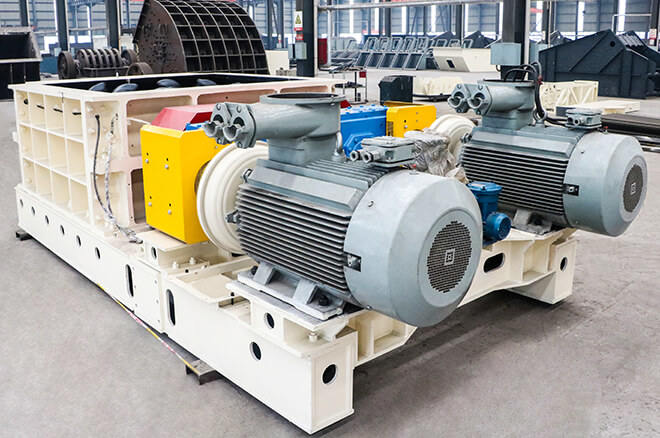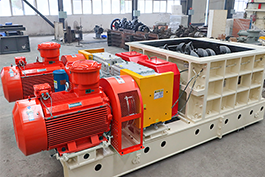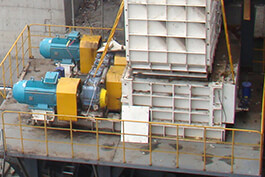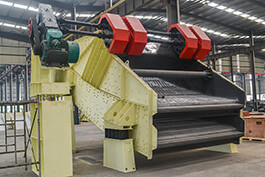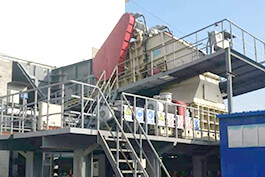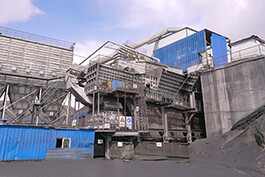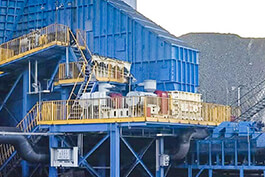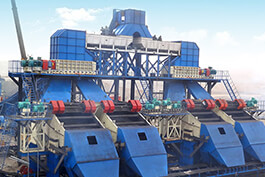Mineral sizers are mainly used in the coal industry in the primary and secondary crushing of coal. One of the most obvious problems is that the updating and iteration speed of the crushing tooth material is slow, the crushing tooth material is single, and it cannot be applied to all application scenarios. Compared with product customization, intelligence, information and green development, the market recognition is still lower than that of international brands. Especially in the relatively harsh environment of the application scenario, the disadvantages of the crushing teeth are not wear-resistant and not stable enough. In view of the above problems, it is a development requirement to conduct basic research on the material of crushing teeth and develop diversified crushing teeth suitable for the scene. It is also the basis for the healthy development of the mineral sizers industry to optimize the material of crushing teeth, improve their performance indicators, reduce casting risks and control manufacturing costs.
.jpg)
Mineral sizers crusher teeth are mostly made of medium carbon steel combined with trace elements such as si, mn, mo, cr, etc., through smelting, pouring, heat treatment and finishing to obtain the formed products. Unlike the current 3d printing technology in the high-end materials market, mineral sizers crusher plates, rings, teeth, etc., are made using an old-fashioned sand casting process, and most of the raw material for sand molding is tidal mold sand (quartz sand and water glass), which is hardened by carbon dioxide to stabilize the sand cavity. Medium frequency induction furnace is commonly used in melting electric furnace. The casting temperature of alloy liquid is between 1600~1700℃. After pouring, sand mold is insulated for 24h. Then the casting process is completed by sand cleaning, cutting off the pouring riser and grinding the corner. After casting, the blank is annealed, shot peening, roughing, quenching, tempering and finishing treatment to finish the entire manufacturing process. Through the analysis of the manufacturing process, it can be understood that the manufacturing of crushing teeth is still at a low threshold level, for example: The casting process is relatively low-end, relying on the weight of the alloy liquid and its flow characteristics to complete the model structure molding of ordinary sand casting, the density of the finished product is less than that of the pressure lost mold, casing or centrifugal pressure casting; the selection of casting sand is tidal molding sand, instead of higher grade furan resin self-hardening sand, alkali phenolic resin self-hardening sand and clay sand, the finished product is relatively poor in appearance, and its internal casting defects are more. The quenching medium is oil medium, rather than a more environmentally friendly quenching liquid, and a comprehensive environmental transformation has not yet been completed. Medium carbon alloy steel has low smelting difficulty, relatively low manufacturing cost and good processing performance. It is widely used in
mineral sizers crusher tooth material in china. Therefore, it is of great significance to conduct a lot of test adjustment on the alloy content of medium carbon alloy steel and through practical application, which is conducive to improving the material performance of domestic crusher teeth.
For mineral sizers crushing tooth material, reasonable and stable element ratio can keep the product performance stable. According to the element content characteristics of medium carbon alloy steel, the fracture tooth samples of four mineral sizers manufacturers with stable performance in the market were selected for spectral analysis, and the mass fractions of four elements were selected for study (c, mn, si, cr), and the average content of each element was selected as the research object. Two groups of casting and heat treatment tests were carried out successively. The content of cr and si elements were adjusted on the basis of the element fluctuation value, and the performance parameters of the finished sample were compared, and the sample material with better parameters was extended to the actual use scenario for practical inspection.
Data analysis and field tests show that increasing the content of cr and si elements in mineral sizers crusher tooth material can obtain products with distinct performance indexes from the original material, which provides the possibility for customization of crusher tooth material use scenarios.
(1) Material performance enhancement. The test data show that the quenching ability of the material is improved, the carbide is more evenly distributed in the material], the plate martensitic structure is refined, the average hardness of the casting is increased, the wear resistance is improved, and the application effect is good.
(2) Increased manufacturing cost and difficulty. Due to the increase of the content of two alloying elements, the casting cost increases, the toughness is reduced, the casting high temperature annealing, hot cutting crack tendency increases, the probability of cracks in the casting increases, which is not conducive to maintaining the stability of the casting, but also makes the hot cutting need to retain thicker gating residual, increasing the workload of machining.
(3) Broaden the scope of customization of crushing tooth materials. The two groups of materials have advantages and disadvantages, and can be reasonably selected according to the application scenario. For example, the crushing teeth of the first group of materials are used to break clean coal in the coal preparation plant workshop, and the crushing teeth of the second group of materials are used in the underground fault mining face with high waste content. At present, when mineral sizers are actually manufactured, the material of the crushing teeth is often single and unchanged, but when the application scenario changes, the originally stable and reliable product may suddenly become unstable and unreliable. The reasons are more complex, but most of them are related to the hardness of the material, the amount of iron entry and the bulk rate of the material. The development of different specifications of crushing tooth materials, the realization of the customization of crushing tooth materials, so that its life and application scenarios match, and the overhaul cycle match, it can not only ensure the reliability of equipment use, but also keep relatively stable in terms of cost and risk. In the future,
mineral sizers will gradually develop in limestone crushing, clay crushing, construction waste recycling and other industries by virtue of its advantages. Further expansion of the crushing tooth material library is the basis for its promotion and application in various industries.


.jpg)
